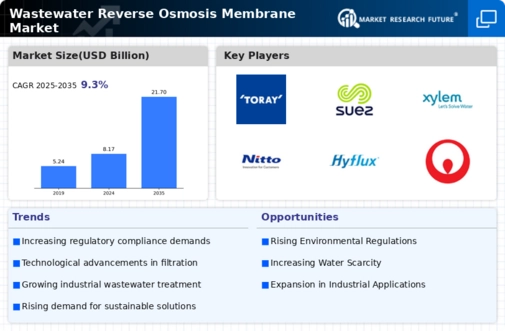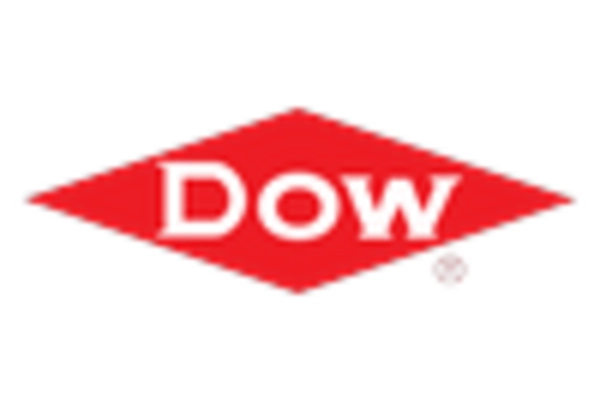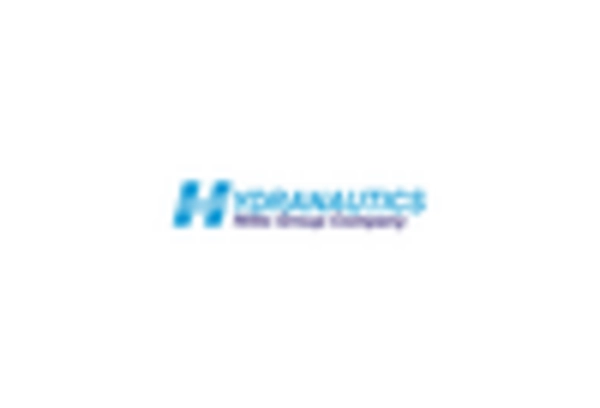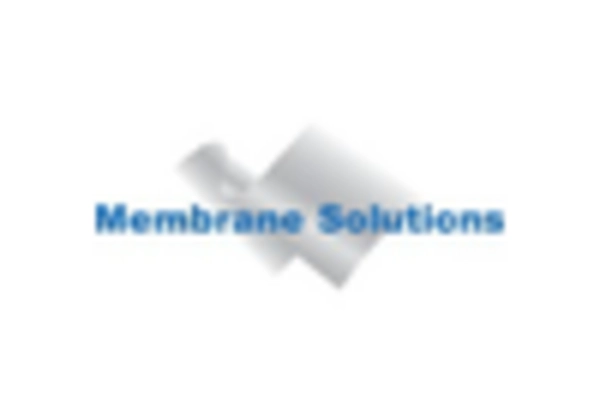Regulatory Pressures
Regulatory compliance is a significant driver influencing the Wastewater Reverse Osmosis Membrane Market. Governments worldwide are implementing stringent regulations to ensure the safe discharge of treated wastewater and to protect water resources. For example, the introduction of stricter effluent standards has compelled industries to adopt advanced treatment technologies, including reverse osmosis. This regulatory landscape creates a favorable environment for the Wastewater Reverse Osmosis Membrane Market, as companies seek to comply with these regulations while minimizing environmental impact. The market is expected to expand as more industries invest in advanced membrane technologies to meet compliance requirements, thereby enhancing the overall efficiency of wastewater treatment processes.
Rising Industrialization
The rapid pace of industrialization is a key factor driving the Wastewater Reverse Osmosis Membrane Market. As industries expand, the volume of wastewater generated increases, necessitating effective treatment solutions. Industries such as textiles, pharmaceuticals, and food processing are particularly significant contributors to wastewater generation. Data indicates that industrial wastewater accounts for a substantial portion of total wastewater produced, highlighting the urgent need for efficient treatment technologies. The Wastewater Reverse Osmosis Membrane Market stands to gain from this trend, as reverse osmosis systems are increasingly adopted to treat industrial effluents. This shift not only addresses regulatory compliance but also promotes sustainable practices within industries, further propelling market growth.
Increasing Water Scarcity
The escalating issue of water scarcity is a pivotal driver for the Wastewater Reverse Osmosis Membrane Market. As populations grow and industrial activities expand, the demand for clean water intensifies. According to recent data, approximately 2 billion people currently live in water-stressed areas, which is likely to increase. This situation compels municipalities and industries to seek efficient water treatment solutions, including reverse osmosis membranes. The Wastewater Reverse Osmosis Membrane Market is positioned to benefit from this trend, as these membranes provide a reliable method for treating wastewater, thereby augmenting the available freshwater supply. Furthermore, the increasing awareness of sustainable water management practices further propels the adoption of reverse osmosis technologies, indicating a robust growth trajectory for the market.
Technological Innovations
Technological advancements play a crucial role in shaping the Wastewater Reverse Osmosis Membrane Market. Innovations in membrane materials and designs have led to enhanced performance, including improved permeability and selectivity. For instance, the development of thin-film composite membranes has significantly increased efficiency in contaminant removal. Market data suggests that the introduction of smart membranes, which can adapt to varying water quality conditions, is gaining traction. These innovations not only improve operational efficiency but also reduce energy consumption, making reverse osmosis systems more economically viable. As industries and municipalities seek to optimize their wastewater treatment processes, the Wastewater Reverse Osmosis Membrane Market is likely to experience substantial growth driven by these technological advancements.
Growing Awareness of Environmental Sustainability
The increasing awareness of environmental sustainability is a driving force behind the Wastewater Reverse Osmosis Membrane Market. As stakeholders become more conscious of the environmental impacts of wastewater discharge, there is a growing demand for effective treatment solutions. This awareness is prompting both public and private sectors to invest in advanced wastewater treatment technologies, including reverse osmosis. Market data suggests that the emphasis on circular economy principles is leading to a rise in initiatives aimed at recycling and reusing treated wastewater. Consequently, the Wastewater Reverse Osmosis Membrane Market is likely to experience growth as organizations seek to implement sustainable practices that align with environmental goals, thereby enhancing the overall efficiency of water resource management.

















Leave a Comment